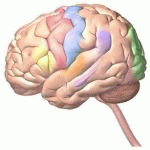Neurology
|
5 september 2015 05:05:12 |
| Test–retest reliability of KINARM robot sensorimotor and cognitive assessment: in pediatric ice hockey players (Journal of NeuroEngineering and Rehabilitation) |
|
Tweet Background:
Better diagnostic and prognostic tools are needed to address issues related to early diagnosis and management of concussion across the continuum of aging but particularly in children and adolescents. The purpose of the current study was to evaluate the reliability of robotic technology (KINARM robot) assessments of reaching, position sense, bimanual motor function, visuospatial skills, attention and decision making in youth ice hockey players (ages 10–14).
Methods:
Thirty-four male children attended two testing days, one week apart. On day one, each subject completed five tasks on the robot with two examiners (alternating examiner sequence); the 2
nd
examiner followed the same procedure as the 1
st
immediately afterwards. One consistent examiner tested subjects one week later. This is a test-retest reliability study. The robotic tasks characterize sensorimotor and/or cognitive performance; 63 parameters from 5 tasks are reported. Session 1 was the 1
st
time the subject performed the 5 tasks, session 2 the 2
nd
time on day 1, and session 3 one week following.
Results:
Intra-class correlation coefficients ranged from 0.06 to 0.91 and 0.09 to 0.90 for session 1 to 2 and 2 to 3, respectively. Bland-Altman plots showed agreement in a majority of the parameters and a learning effect in 25 % and 24 % of parameters in session 1 vs 2 and 1 vs 3, respectively but none for session 2 vs 3. Of those that showed a learning effect, only 8 % of parameters in session 1 vs 2 and 10 % in session 1 vs 3 had a clinical relevance measure ≥ 0.8.
Conclusions:
The relative homogeneity of the sample and the effect of learning seen in some of the task parameters appears to have negatively impacted the intra-class correlation coefficients from session 1 to 2, with less impact for 2 to 3. The Bland-Altman analysis supports good absolute reliability in healthy male children with no neurological impairment ranging in age from 10 to 14. The clinically relevant learning effect seen, in a small number of parameters could be addressed by creating a learning effect adjustment factor and/or implementing a practice session, which would eliminate the learning effect. |
| 233 viewsCategory: Neurology |
 Alterations in serum microRNA in humans with alcohol use disorders impact cell proliferation and cell death pathways and predict structural and functional changes in brain (BMC Neuroscience) Alterations in serum microRNA in humans with alcohol use disorders impact cell proliferation and cell death pathways and predict structural and functional changes in brain (BMC Neuroscience)Treadmill exercise enhances therapeutic potency of transplanted bone mesenchymal stem cells in cerebral ischemic rats via anti-apoptotic effects (BMC Neuroscience) 
|
| blog comments powered by Disqus |
MyJournals.org
The latest issues of all your favorite science journals on one page
The latest issues of all your favorite science journals on one page



